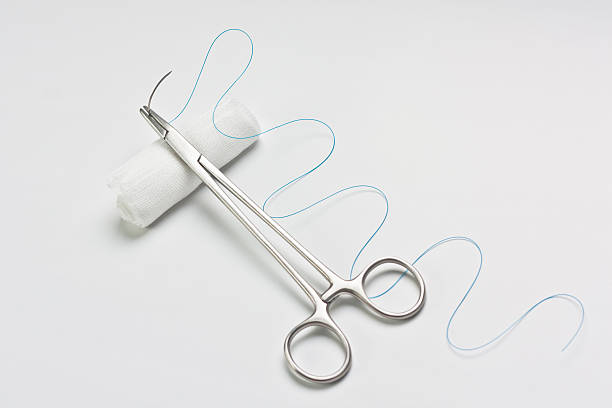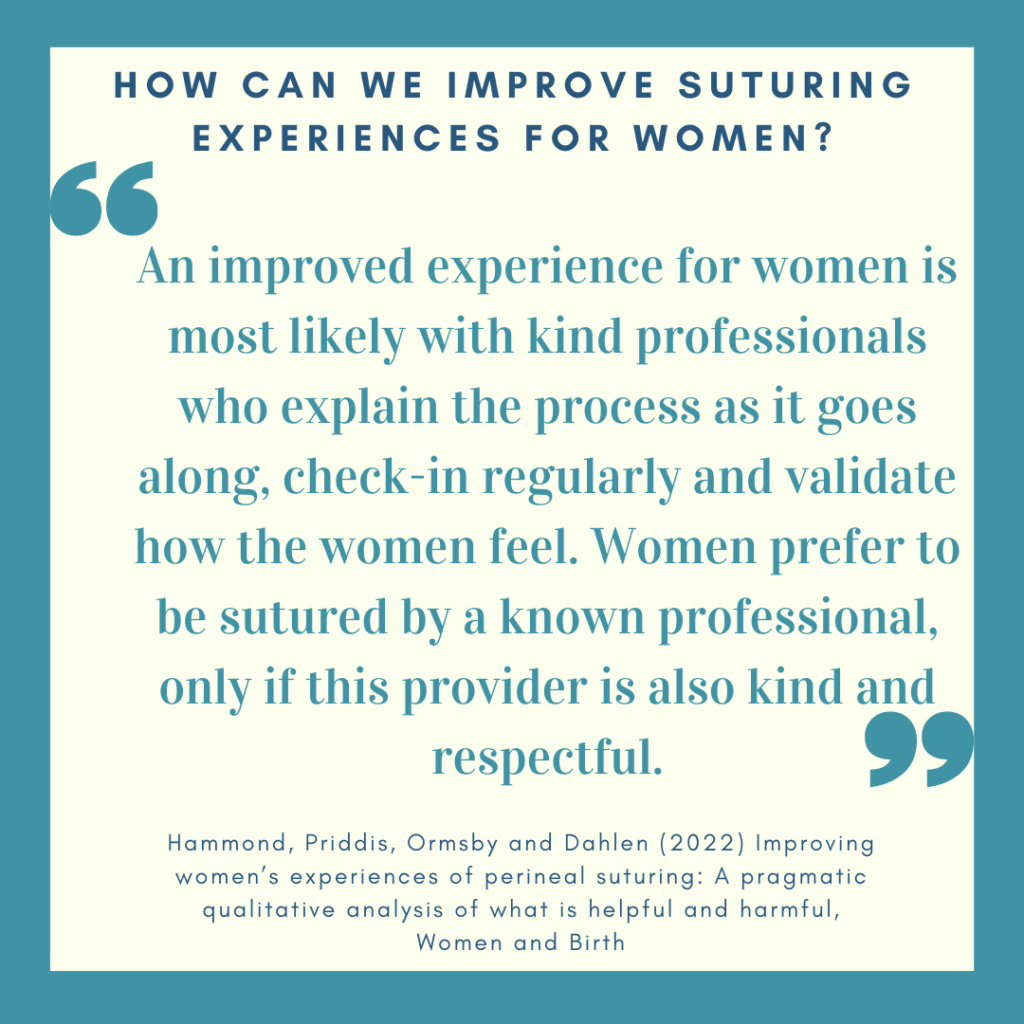
During the process of birth planning with the women I support we always touch on suturing of tears and episiotomy. What are the different types of tears? When is an episiotomy used and what does this look like? How are tears and episiotomies different and what is the healing like? Many women don’t realise that there are options with suturing, just like with any other aspect of birth! I ask questions like:
“How do you feel about suturing a first degree tear?”
“If you’re having a tear repair, do you want your baby to remain skin to skin with you throughout?”
“If you decide to have a severe tear repaired, would you prefer a spinal or a general anaesthetic?”By asking these questions women become more aware that there are options around suturing. Even in an unplanned situation you still have bodily autonomy and control of your choices.
So what does suturing of tears or episiotomy look like?
While supporting women, I see a range of different perineal suturing experiences. From supported, informed, totally consensual procedures to the opposite of that. Every woman should feel well informed of the risks and benefits of the procedure. Every woman should have a patient, respectful care provider providing this medical care. During my own personal experience I agreed to suturing of a 2nd degree tear on my bed by a known midwife. While it was painful having the anaesthetic put in, it was very manageable. I believe most of this is because I was listened to, respected and knew, unequivocally, that if I withdrew consent that would immediately be respected.
So why do we need to do suturing better?
In some settings I’ve witnessed women not listened to or respected during the suturing process. Typically these women leave their experiences with significant psychological (and also physical) trauma. As we teach in Calmbirth, with fear comes tension and with tension comes more pain – consequently, if we eliminate the fear and ensure women feel heard and respected, we can reduce the tension and pain! This is why I ask the question, “Can we do better?” when it comes to suturing. Why aren’t we ensuring all women are in a space of feeling respected, validated and heard throughout their experience? Suturing is still a part of the birth experience and we need to approach it as such.
In this study it was noted that if women were given explanations, checked in with regularly and validated, they could have a much more positive experience of suturing. Unfortunately, this isn’t always the case. It truly isn’t that hard to approach these things with empathy and compassion; the more we do this, the better experiences we have and the less trauma we experience. If you are one of the many compassionate, respectful care providers out there, THANK YOU! You are making a massive difference to every woman and family you support. You are leading the revolution of maternity services and for that, I am very grateful.

What happens if you didn’t have a positive suturing experience?
If you have had an experience where you weren’t respected I am so, SO sorry. This isn’t an acceptable experience and warrants support in working through. Please reach out for support if you need it – Panda, Cope and Lifeline are all valid options as is the incredible The Birth Counsel, Athena, who authored the above linked article! If you have the strength and support, please report any situations where you aren’t respected! This is how we see shifts in the maternity care provided to women and families. Send a complaint to the HCCC and also internally to the hospital/practitioner you experienced it with – It is only through standing up against mistreatment that we will see the shifts in maternity care that we really need.
If you need to talk about it, please reach out. I do offer debriefing services should that be something you feel you want to explore. Get in touch if this sounds like something that you could use or come and have a look at my Facebook or Instagram pages.
Aimee xx
